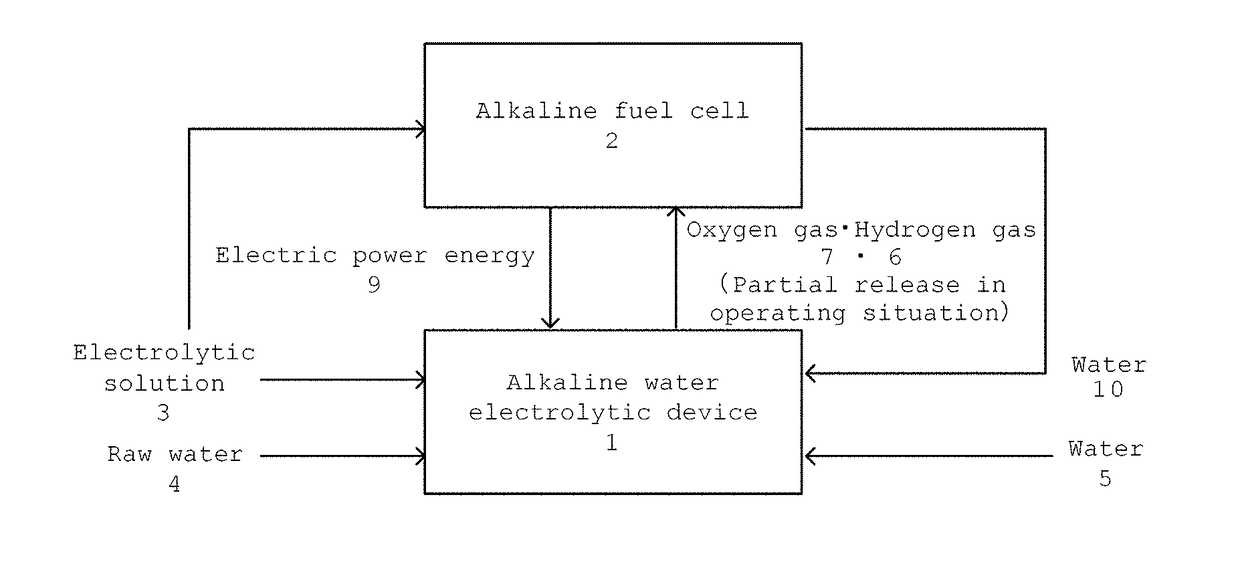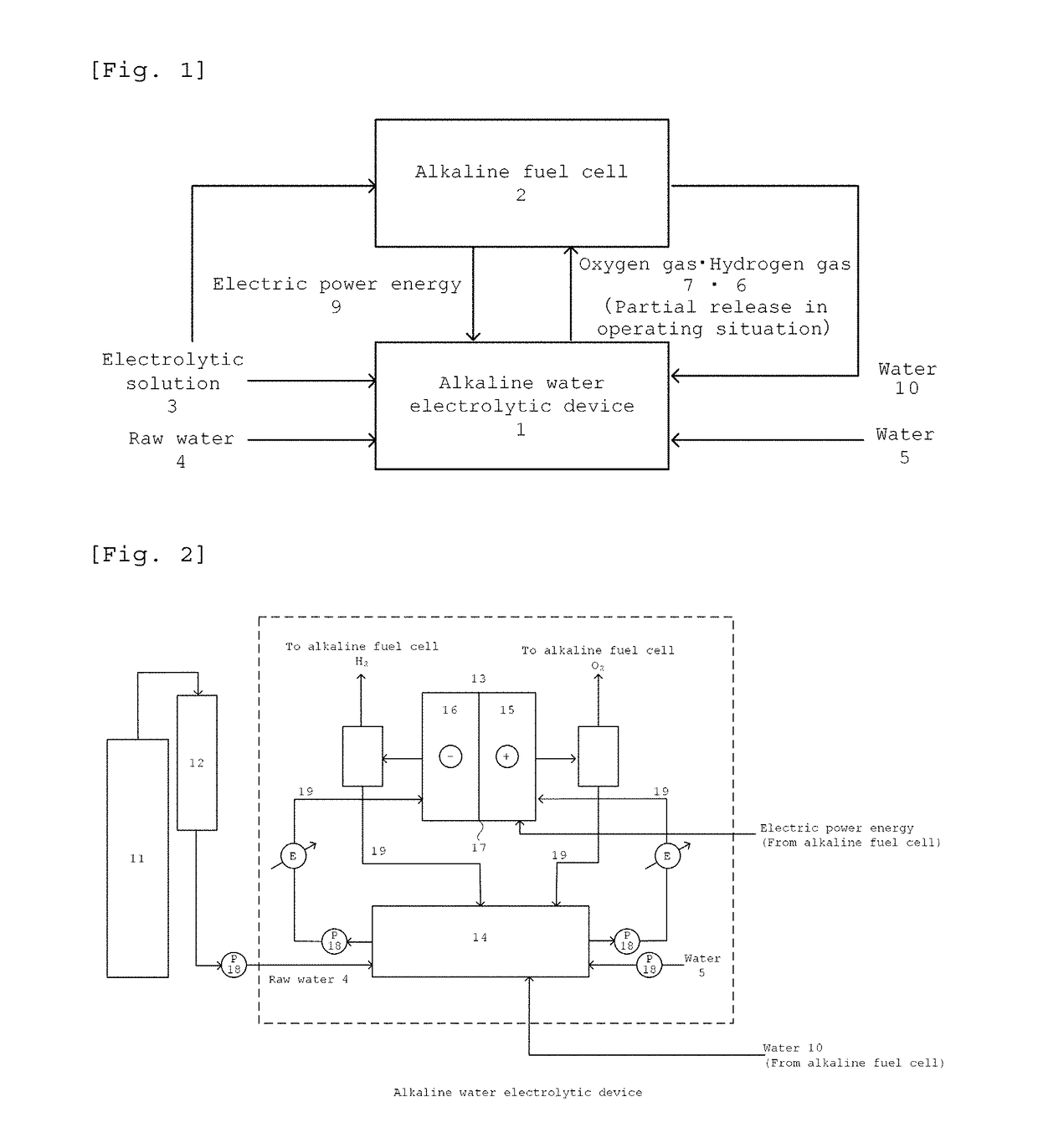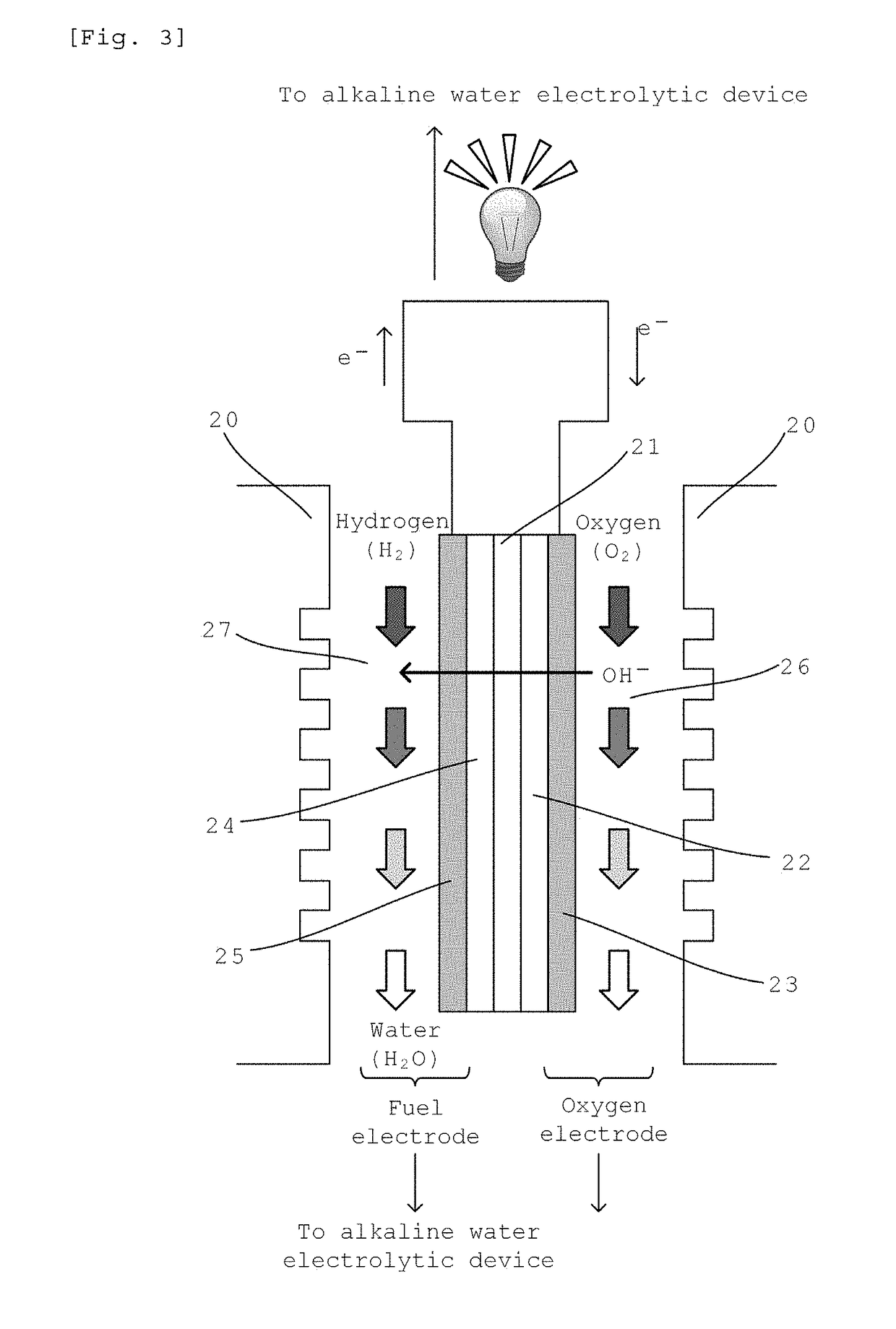Water treatment system using alkaline water electrolysis device and alkaline fuel cell
- Summary
- Abstract
- Description
- Claims
- Application Information
AI Technical Summary
Benefits of technology
Problems solved by technology
Method used
Image
Examples
example 1
[0126]A simulated liquid of raw water containing tritiated water that does not contain impurities (hereinafter, referred to as a “simulated liquid”), a simulated liquid with the following components was used.
[0127]Simulated liquid: 180 L
[0128]Initial concentration of tritium in simulated liquid: 4.2×106 Bq / L
[0129]As illustrated in FIG. 2, a raw water storage tank 11 containing 180 L of the simulated liquid was provided. In this test, the simulated liquid was fed from the raw material storage tank 11 to a circulation tank 14 through a treatment bath 12. Specifically, 9.67 L / day of the simulated liquid was fed from the raw material storage tank 11 to the circulation tank 14 through the treatment bath 12 by a pump 18. In this test, in an alkaline water electrolytic device, an electrolytic solution formed of the simulated liquid was continuously fed, and continuous electrolysis was performed while the electrolytic solution was circulated.
[0130]Specifically, to the circulation tank 14, 9...
example 2
[0153]As illustrated in FIG. 4, 2nd, 3rd and 4th alkaline water electrolytic devices and 2nd and 3rd alkaline fuel cells were connected to the alkaline water electrolytic device 1 and the alkaline fuel cell 2 in a cascade mode, respectively.
[0154]180 L of the simulated water used in Example 1 is used as raw water (contaminated water), and the electrolytic solution formed of the contaminated water and the alkaline aqueous solution is used. First, the alkaline water electrolytic device is started by external electric power, and the resulting hydrogen gas and oxygen gas are sent to the alkaline fuel cell. Electric energy and water are collected by the alkaline fuel cell. Electrolysis is continued using the obtained electric energy, the obtained water is used as supplementary water for the alkaline water electrolytic device, alkaline water electrolysis is continued, and the contaminated water is concentrated. The concentrated contaminated water is sent to the second alkaline electrolyti...
PUM
 Login to View More
Login to View More Abstract
Description
Claims
Application Information
 Login to View More
Login to View More - R&D
- Intellectual Property
- Life Sciences
- Materials
- Tech Scout
- Unparalleled Data Quality
- Higher Quality Content
- 60% Fewer Hallucinations
Browse by: Latest US Patents, China's latest patents, Technical Efficacy Thesaurus, Application Domain, Technology Topic, Popular Technical Reports.
© 2025 PatSnap. All rights reserved.Legal|Privacy policy|Modern Slavery Act Transparency Statement|Sitemap|About US| Contact US: help@patsnap.com



